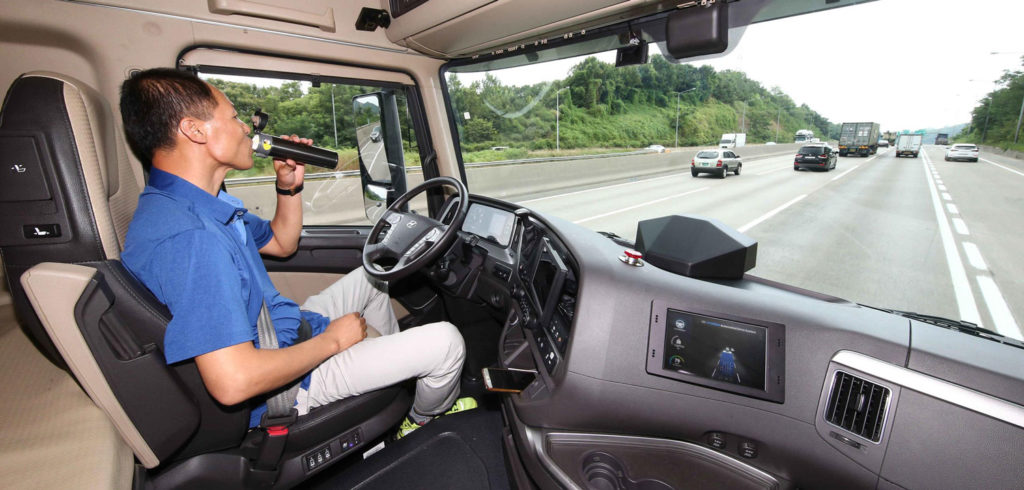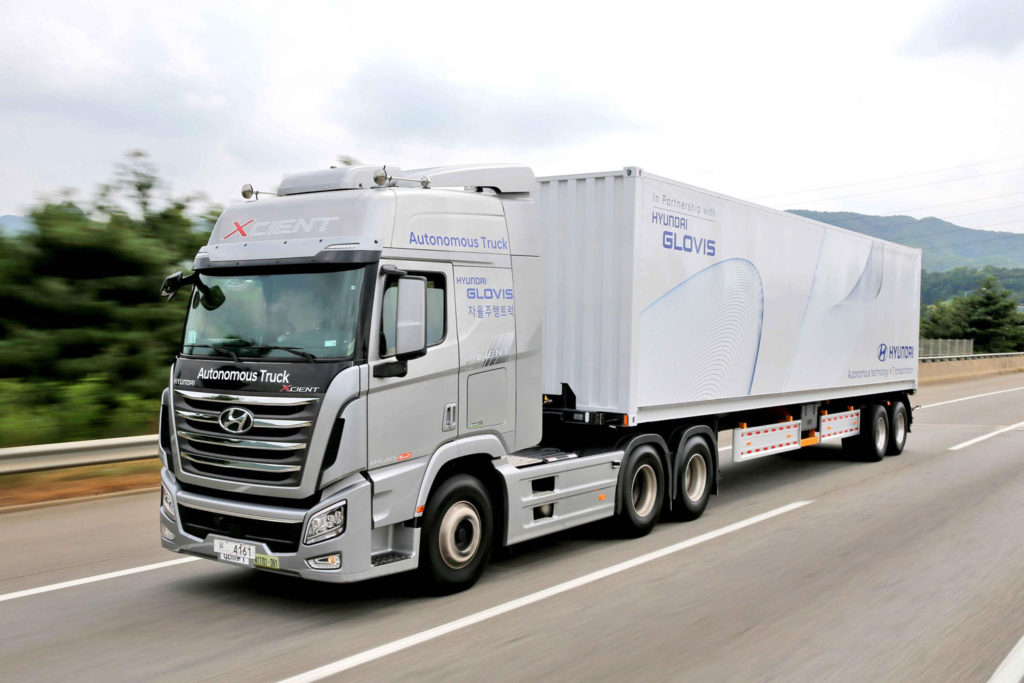Hyundai has completed South Korea’s first domestic highway journey with an autonomously navigated semi-trailer truck.
Hyundai’s Xcient truck drove approximately 40km on the highway between Uiwang and Incheon, carrying a large semi-trailer simulating cargo transportation.
“This successful demonstration proves that innovative autonomous driving technology can be used to transform the trade logistics industry,” said Maik Ziegler, PhD, director of commercial vehicle R&D strategy group at Hyundai Motor Company.
“At this stage, a human driver is still used to control the vehicle manually in certain situations, but I think we will achieve Level 4 automation soon as we are constantly upgrading our technological capability.”
The demonstration, which took place on August 21, was conducted using Hyundai’s Xcient model truck, which has a maximum load capacity of 40 tons. This was semi-equipped with a SAE standard Level 3 autonomous driving system, enabling it to steer, accelerate or decelerate, and maneuver through traffic, all without human input. A human driver was on board to take over manual control when required.
The vehicle was equipped with innovative technology features, which enabled it to maintain and change lanes during the natural flow of traffic, detect lane changes made by vehicles in front of it, navigate through tunnels, and perform a complete halt or accelerate according to road traffic.
For the demonstration the Ministry of Land, Infrastructure and Transport (MOLIT) issued a temporary autonomous driving license for the first time to a heavy-duty truck. Hyundai Motor, in cooperation with its trade subsidiary Hyundai Glovis, utilized this opportunity to test the application of autonomous driving for use in the trade logistics industry.
The test route is Hyundai Glovis’s most frequently travelled section for vehicles heading to the Port of Incheon. This includes 40km in total of automobile highway. The truck successfully completed the journey, traveling 40km in one hour while adhering strictly to the expressway speed limit of 90km/h.
Hyundai Motor is planning to undertake further autonomous navigation technology tests in future in a variety of areas such as the coastal city of Busan, and plans to concentrate on its enterprise development capabilities with the aim of early commercialization of the technology.
Expressways headed toward the Port of Incheon carry heavy traffic even during the week, due to the high quantity of goods being exported. Therefore the vehicle’s autonomous technology and know-how had to be sufficient enough to adapt to unexpected situations throughout the journey.
In addition, the semi-trailer truck is approximately 3.5 times longer, 1.4 times wider, and 9.2 times heavier than the average compact sedan (when compared with an empty truck’s weight). This requires an advanced and detailed autonomous navigation system.
Accordingly, Hyundai Motor equipped sensors similar to the ones featured in autonomous sedans, and additional sensors optimized for heavy-duty trucks, like a hitch angle sensor and trailer rear radar sensor.
The truck has 10 different sensors: three front and side-rear cameras, two frontal and rear radars, three lidars in the front and sides, and a hitch angle sensor in the trailer coupler that computes the change in angle between the truck and trailer in real time, allowing the truck to be safely stabilized upon sharp turns.
The data collected by each sensor collaborates with the HD map and sends information to the electronic control module for localization. The module makes accurate decisions for each situation, controlling the speed, steering, and breaking accordingly.
A new steering control system (Motor Assist Hydraulic Steering) developed by Hyundai Mobis was also implemented, providing a precise steering mechanism that controls the steering angle depending on the decision made by the electronic control unit. This minimizes the effort required to steer the vehicle, reducing driver fatigue.
The introduction of the autonomous truck to trade logistics is predicted to instigate groundbreaking change in the industry, which is shedding its traditional industrial image by integrating innovative technology like autonomous navigation, IoT and mobility technology to reform as a state-of-the-art technology industry.
Autonomous trucks maximize efficiency by maintaining the most efficient speed and velocity, which reduces fuel costs that make up one third of long distance delivery costs, thereby lowering the vehicle’s carbon footprint.
“Hyundai Glovis’s success in utilizing self-driving trucks as part of its delivery service proves that the self-driving technology is being utilized in actual logistics transport and can lead to mutual development,” said Sang-Sok Suh, PhD, head of strategy and planning group at Hyundai Glovis. “The company will be a leader in adopting future mobility technology like autonomous driving for the trade logistics industry.”
In the distribution industry, when multiple trucks travel in a convoy all vehicles precisely follow the path of the leading vehicle. Hyundai is currently investing in truck platooning technology that will enable this process to continue with autonomous vehicles, and plans to complete this by the 2020s.



